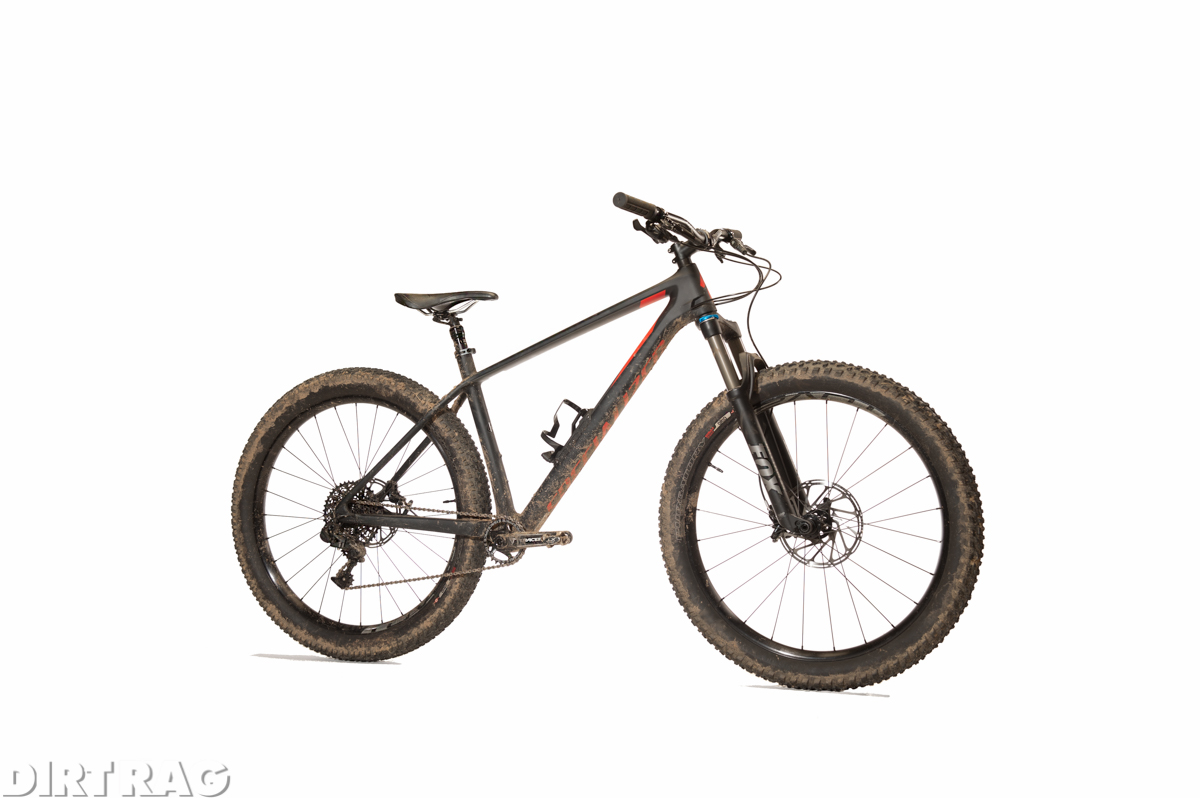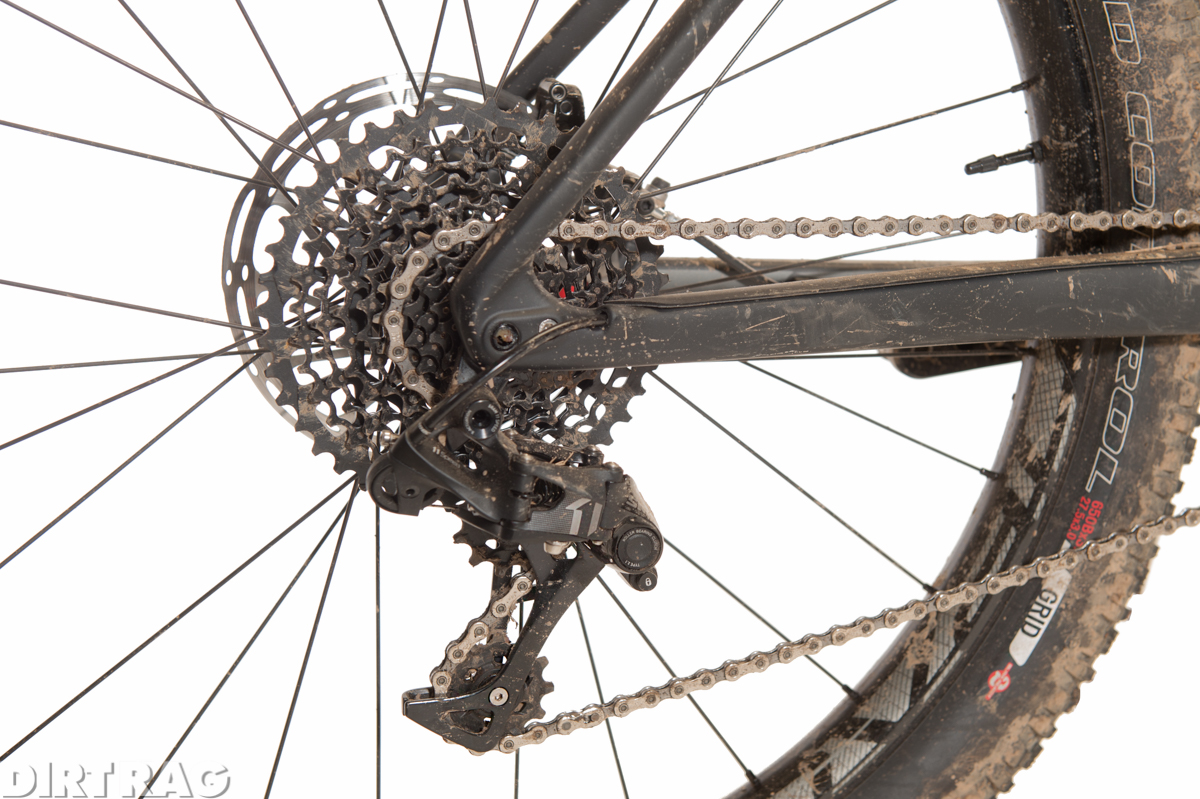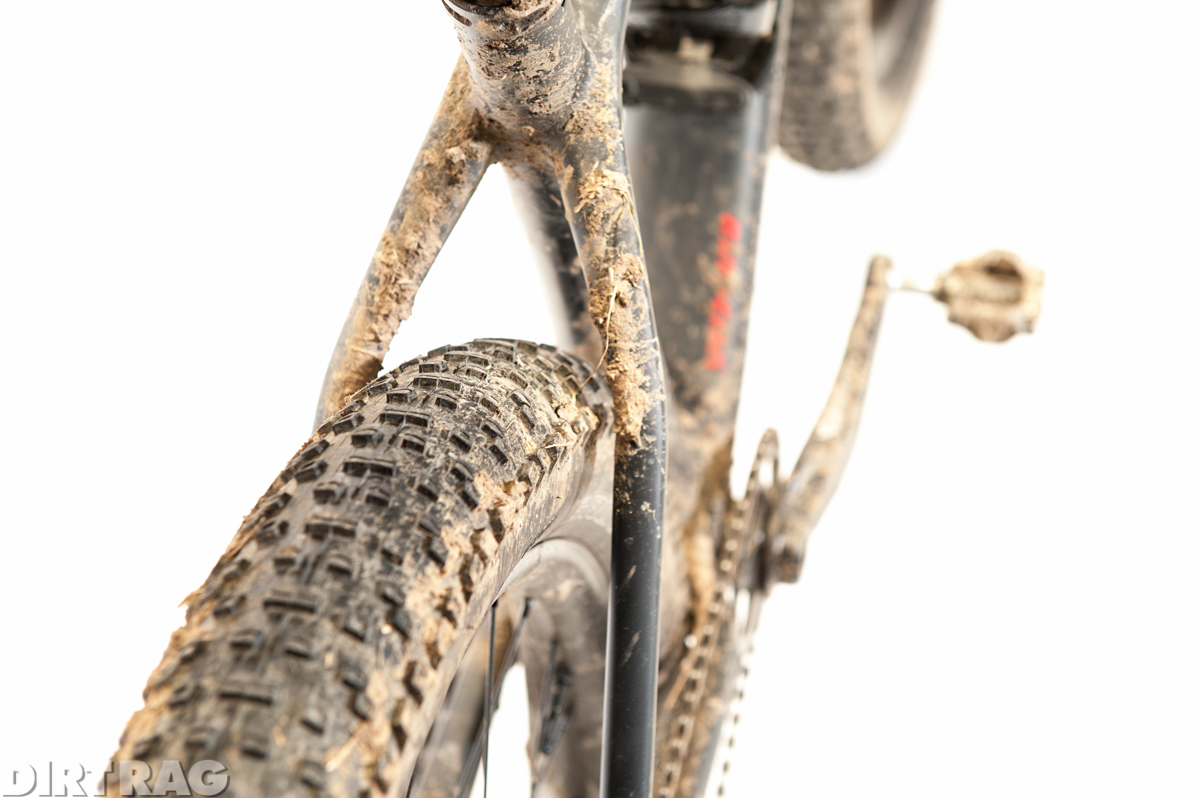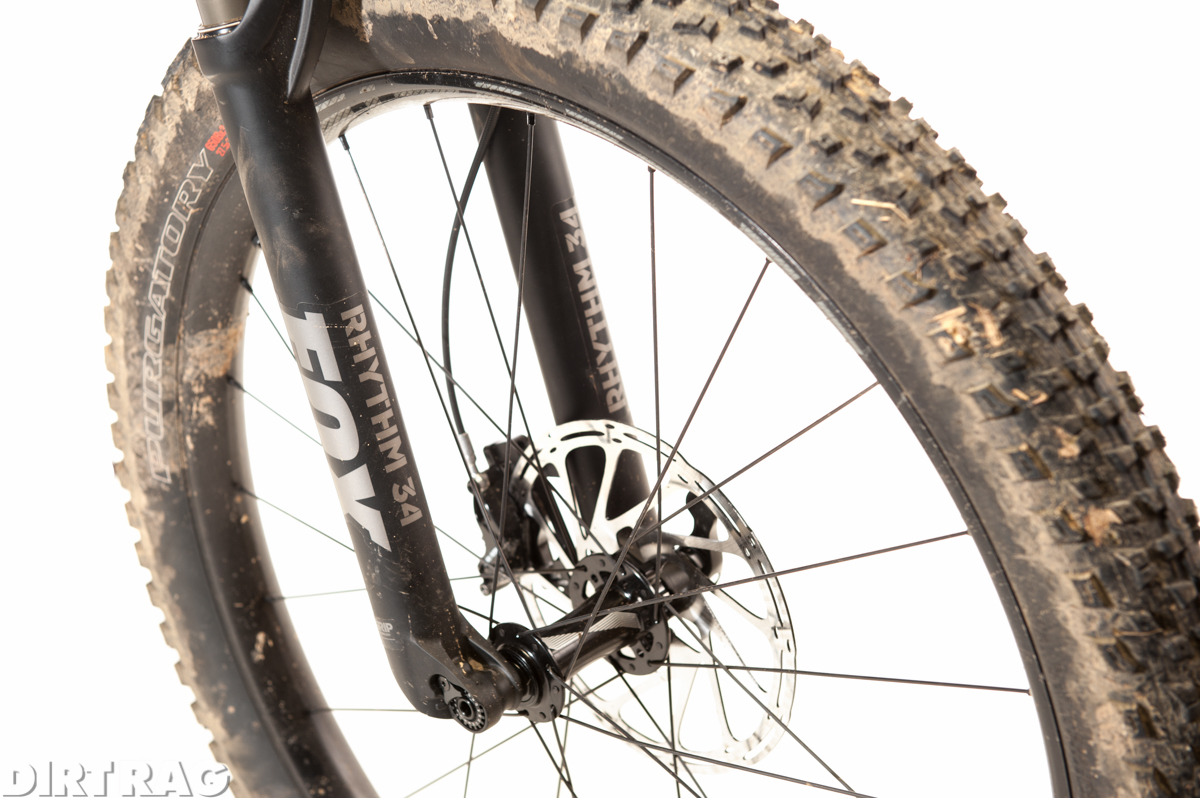Review: Specialized Fuse Expert Carbon 6Fattie
Originally posted on October 30, 2017 at 1:27 amTester: Stephen Haynes
Age: 39
Height: 5’11”
Weight: 210 lbs
Inseam: 30”
If acceptance into our popular culture is predicated on a product or brands’ appearance in a Wal-Mart store, then 27plus as a wheel size has arrived. I noted this arrival on a recent trip to the purveyor of all things cheap and excessive with intrigue and humor.
While I’m happy to see the trickle down of something I consider to be excellent (27plus wheel size), in terms of progression reaching the masses, I wonder what the general public makes of such advances and whether or not they notice.
In any event, the bike industry has certainly latched onto biggie-sized terrain crawlers, and Specialized, one of the biggest in the game, is no exception.

The Bike
The Specialized Fuse Expert Carbon 6Fattie is a bike whose sole purpose seems to be “make hardtail bikes cool (again).” They even use this language in their marketing spiel “… the thought of a hardtail conjured up images of Lycra, not all-out trail ripping … the Fuse hardtail trail bike has turned that notion on its head.” The use of the term “6Fattie” notwithstanding, I think they’ve done a pretty good job.
The Fuse has all the trappings of a modern carbon mountain bike including internal cable routing, 148 x 12 mm rear thru-axle, tapered head tube and a “what’s old is new again” threaded bottom bracket. It also employs Specialized’s proprietary SWAT storage system in the downtube (more on that in a minute).
As far as components are concerned, the Fuse is well-equipped with a smattering of mid-to-high-range bits and bobs, notably the Fox Rhythm Float 34 fork, RaceFace Turbine Cinch crankset and SRAM Guide R hydraulic brakes, all of which represent the “silver build,” if you will, in Specialized’s fully stocked quiver of bikes in this line.
The base model Fuse, simply called the Fuse 6Fattie, starts at just over $1,000 and has an aluminum frame and SR Suntour XCM coil spring fork. The mid-range Fuses (Sport, Comp and Expert) also have aluminum frames and ever-increasing prices to match their increasingly refined builds. If you really want to level up the component game, go for Specialized’s “S-Works” version of the Fuse, highlights of which include an Ohlins fork, SRAM Guide RS carbon brakes, Roval Traverse wheelset and a SRAM XX1 Eagle drivetrain. It’ll only set you back $6,500 or so.

Back on the Fuse Expert Carbon, the aforementioned SWAT (storage, water, air and something starting with “T”) downtube storage compartment is in use here and is, despite my trepidation, quite useful. My test rig came equipped with a spare inner tube shoved up into the receptacle like so much prison contraband, and there’s still room enough for a pack of mini donuts or about a half a roll of toilet paper, thus covering any potential emergency.
The built-in-ness doesn’t stop there either. The bottle cage, which acts as a lid to the SWAT smuggler’s cache, also hides a mini-multitool, complete with a handful of useful Allen keys, flathead screwdriver and a T25 Torx wrench. If you do a lot of “quick burn” type rides, are forgetful, are looking to become a drug smuggler, or consider yourself a minimalist in terms of what you like to carry around on your person, these last two paragraphs should have you drooling.

The Ride
The point of semi-raked-out hardtail bikes with well- endowed wheels and short-as-possible chainstays is to give the rider the ability to pedal up to a great descent and then plummet, full speed, down the other side, losing as little as possible, efficiency-wise, on either end. The Fuse EC6F does a lot of this really well.
Pedaling the Fuse EC6F on the flat is a well-balanced, relatively benign exercise, which is as it should be. Technical bits like rock gardens, roots and log-overs are mostly an afterthought given the abundance of absorption at your disposal and the leverage available with the wide-ish 750 mm Specialized Trail bars. Granted, this determination is predicated on riding familiar trails, the acknowledgment of typical problem areas and the ease you’re able to clear them based on previous encounters.
Faced with an inclined plane, the Fuse acts like a horse with a mind of its own. Sitting down and grinding leaves you at the mercy of a wandering front wheel, which seems intent on going anywhere but straight. Standing requires you to keep your focus not only on the trail, but also where you place your balance between the wheels. Too far forward and all that added traction is for naught. Too far back and you’re fighting the front wheel again. Still, if you get it right, the Fuse is a beast.
Pointed downhill the Fuse lights up. Like all bikes of this ilk, you don’t need to coax it to go fast, it’s in its DNA. The front end that has you reigning it in on the climbs becomes a precision instrument when descending. Like a scalpel in the hands of a surgeon, you can slice through terrain with terrific clarity and all at once change direction, juke around an obstacle or gingerly persuade it around a flowing corner. I would call it twitchy, but it’s too controlled for that word.
The rear end, on the other hand, feels like it didn’t get the memo. Like Tony Hawk’s trademark bangs, the party’s in the front, and the back is all business. I thought about other bikes I’ve ridden that employ large volume tires, raked-out front ends and short chainstays, like the Trek Stache or the RSD Mutant, both of which felt balanced and capable through anything. The difference seems to be 29plus versus 27plus. While it’s seemingly a slight difference, I think it’s providing something of a hiccup for the Fuse. The slightly smaller wheel is stiffer and smaller, therefore, unwavering in its struggle to not give an inch.
Comparatively, a 29plus wheel seems to flex ever-so-slightly, and the larger diameter creates a greater angle of attack, blunting the edges for you as you take on corners and dodge trees. That said, everything about the Fuse feels solid, giving you the confidence to throw it around a bit without fear of damaging it.
The Command Post dropper worked as advertised with no hesitation in cold or wet conditions, and the Fox 34 Float was as composed as Luke Cage in a street fight, taking hits at both low and high speed with equal indifference. This could also explain the seemingly uptight rear end, in that the front is so good and so “up for it” that anything by comparison feels rigid.
One of the highlights of this bike for me was the SRAM Guide R brakes. They are truly the best brakes I’ve ever used. Dry, wet, cold, hot, they work with buttery smoothness, and they work right out of the box. No break-in period needed.

Conclusion
If last year taught us anything, it’s that the popularity of voluminous air receptacles cannot be underestimated. Whether you agree with this sentiment or not is of no great import; brands both large and small are super-sizing their wares with more frequency, or opting to develop whole new lines to accommodate the big ‘n wide crowd.
The Specialized Fuse Expert Carbon 6Fattie, is an excellent choice for anyone (drug smugglers) looking for a fun bike that can do just about everything right out of the box (smuggle drugs) and gets bonus points for remembering a spare tube and tools for you when you forget them yourself (drug mule).

Specs:
Reach: 17.3”
Stack: 24.9”
Top Tube: 25”
Head Tube: 67.5°
BB Height: 12.5”
Chainstay: 16.9”
Weight: 29 lbs.
Price: $3,500
Sizes: S, M, L (tested), XL

Photos: Jon Pratt
This review originally appeared in Dirt Rag 197. Subscribe now to never miss an issue and while you’re at it, sign up for our email newsletter to get fresh content delivered to your inbox every Tuesday!